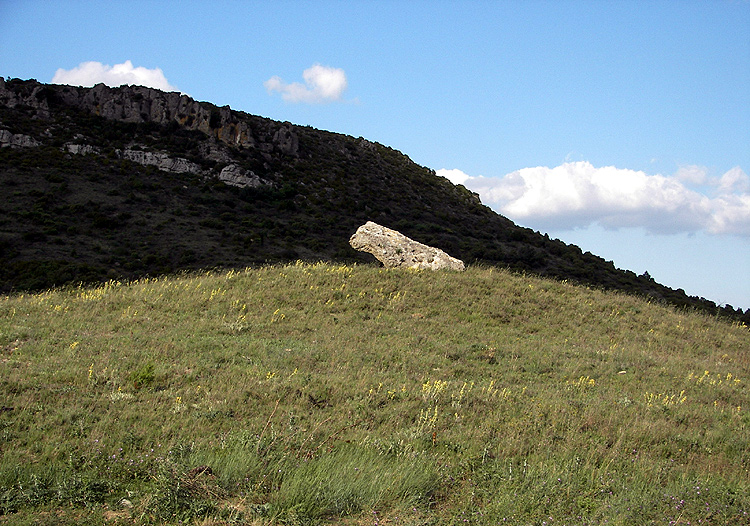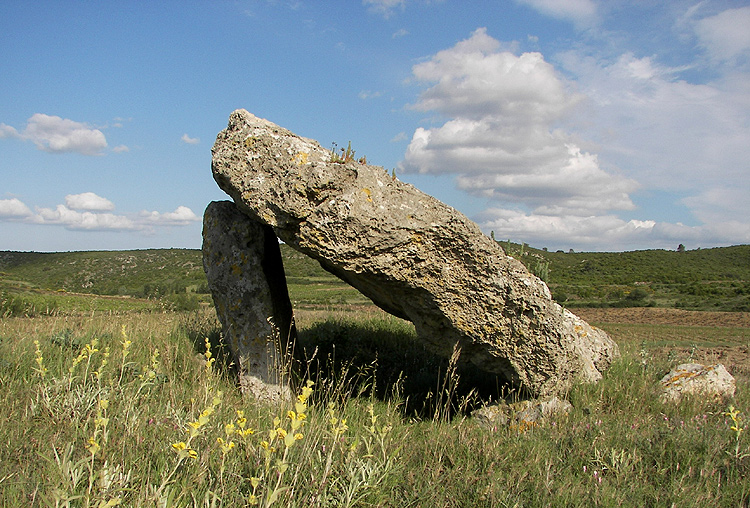There is no information about this sizeable and beautifully placed dolmen – not online nor in the archives of S.E.S.A. – la Société d’ Etudes Scientifiques de l’Aude of which I’m a member. It has been thoroughly taken apart and turned-over by treasure-seekers and amateur archaeologists and I can find no reference to it anywhere, apart from Quid.fr and Bruno Marc’s guide – and of course the Megalithic Portal. But it still stands – a massive and powerful presence on its shapely tumulus.
It is difficult to distinguish the tumulus from the natural hillock on which it stands – together they rise over seven metres above the fertile little valley-bowl. The diameter is about 30 metres.
The table or capstone is pear-shaped, with the narrow end pointing earthwards – and due south, though this may be accidental. It measures 2.65 m long, by 2.15 at its widest. The limestone is deeply eroded in places, but is thick at 30/40 cm.
This third stone may once have been part of the dolmen – or of some outer ring-construction.
The name Palats is borrowed from the farm at the northern rim of the fertile little basin of vine and meadow. Bruno Marc has found a reference to a ‘Camp dau Palet’ [‘field of’] which could be occitan or catalan. Looking up ‘palet‘ or ‘palat‘ on Google and in old dictionaries gives a bewildering array of choices: in heraldic terms, palats refer to a barred ground in a shield. It would describe the yellow/red bars on the Barcelona shield. Pals are also poles or sticks. And palets in old French are round flat stones, that could have been the origin of the Jeu de Palets: it’s a game played usually between 2 teams of 2 players, who must launch metal pucks so as to place them as close as possible to another smaller puck previously launched onto the game-zone (a square of lead or poplar wood). Each player has 1 small puck of 27mm in diameter called the master and 12 brass or iron pucks 40mm in diameter numbered 1 to 12. The pucks numbered 1 to 6 have no ringmarks and those numbered 7 to 12 do. In addition, the pucks have a staight edge and a rounded edge. The staight side allows better displacement of an obstructing disc, the rounded edge can get better effects to place themselves in difficult situations. It originates in 16th. century Brittany – where it is still played.
But since most of this part of the Corbières is composed of stones, one must presume the name of the farm was in fact derived from the great slabs that formed the burial place on the mound.






Yes, the “Jeu du Palet” is a medieval game but a “palet” is also an old word (old french and old occitan) which often nicknames megaliths. There are some dolmens and menhirs in Cévennes mountains and in “Minervois” country which have this name. The “palet” is certainly an image to indicate a standing stone (or dolmen capstone)